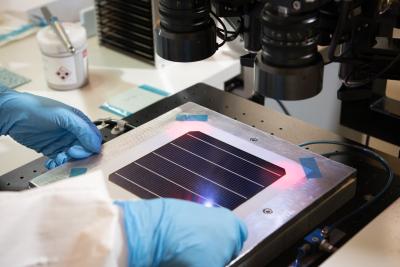Researchers design flexible X-Ray detectors based on molecular perovskites
Researchers from China's University of Science and Technology of China (USTC) and Shaanxi Normal University have synthesized a new molecular perovskite, DABCO-CsBr3 (DABCO = N,N′-diazabicyclo[2.2.2]octonium), for use in flexible X-ray detectors. The material was prepared from DABCO, CsBr, and HBr in aqueous solution and obtained in the form of colorless crystals.
The team found that DABCO-CsBr3 possesses good mechanical properties for use in flexible devices. Compared with the metal-free equivalent DABCO-NH4Br3, DABCO-CsBr3 has a stronger X-ray attenuation capability. The researchers built a flexible X-ray detector, using a poly(vinylidene fluoride) (PVDF) polymer matrix that was mixed with DABCO-CsBr3 to create a composite film. This film shows a linear relationship between the X-ray-induced current density and the X-ray dose rate. According to the team, the material could have applications in X-ray security screening systems or medical diagnostics.







